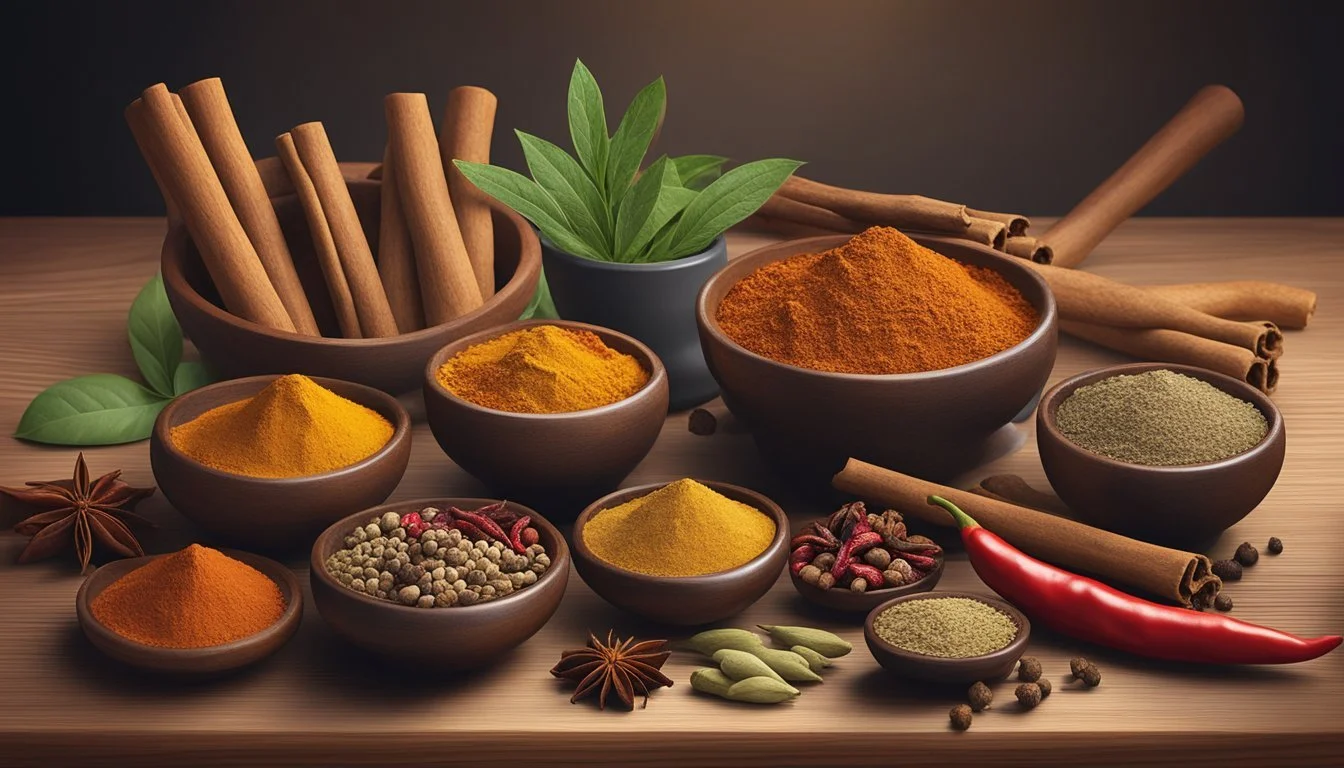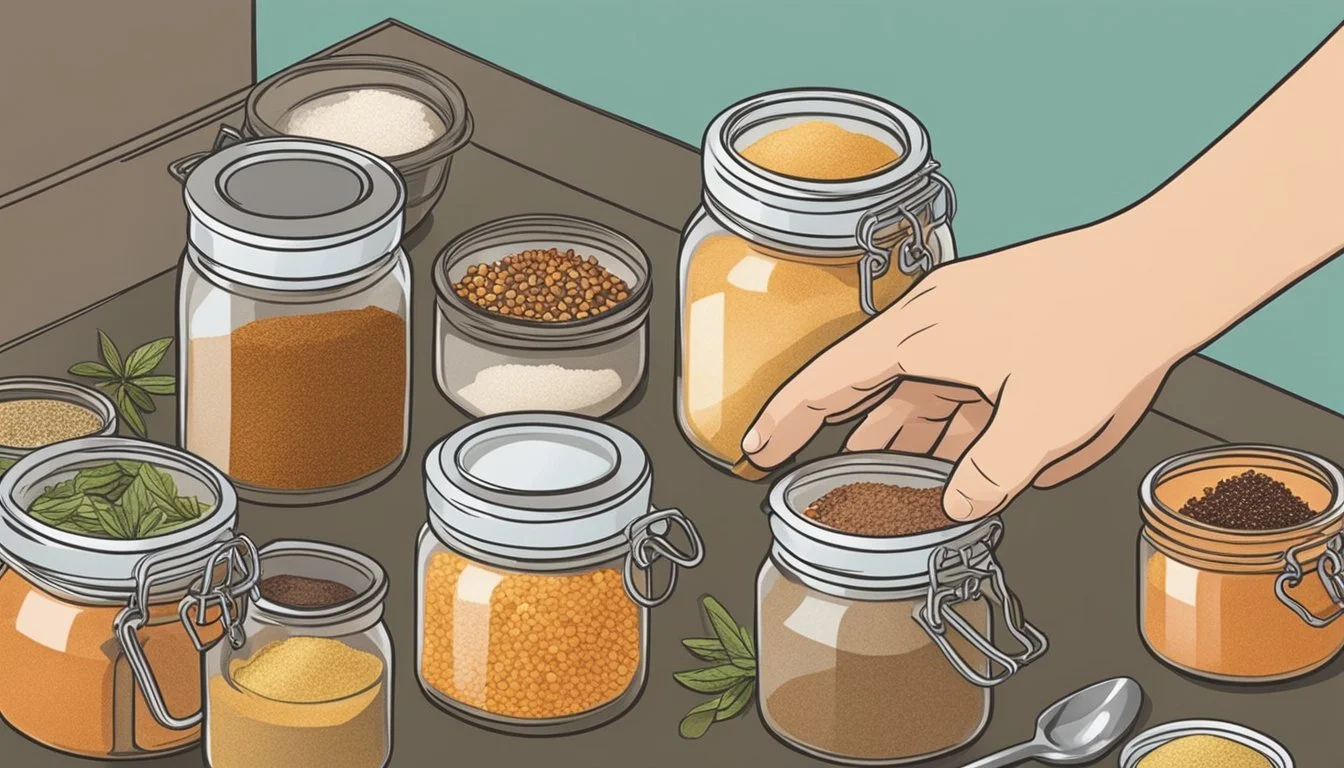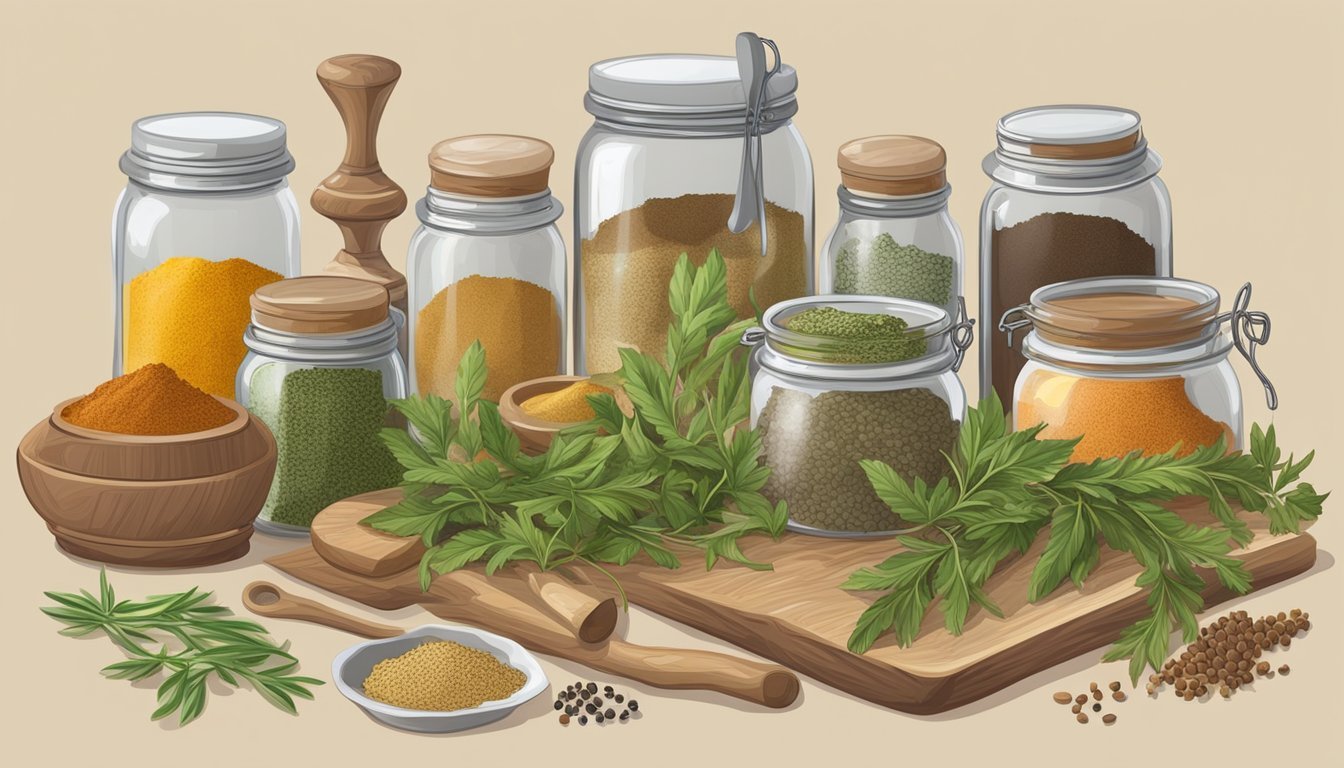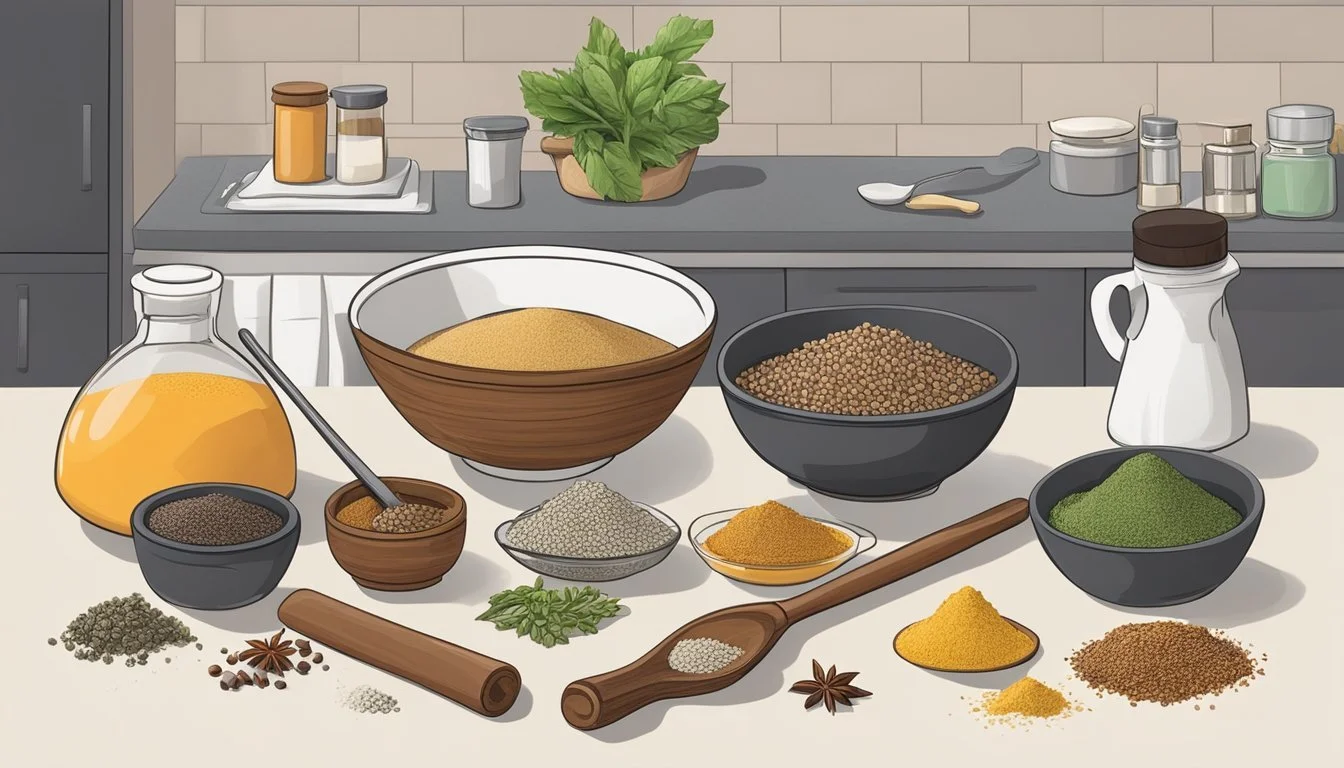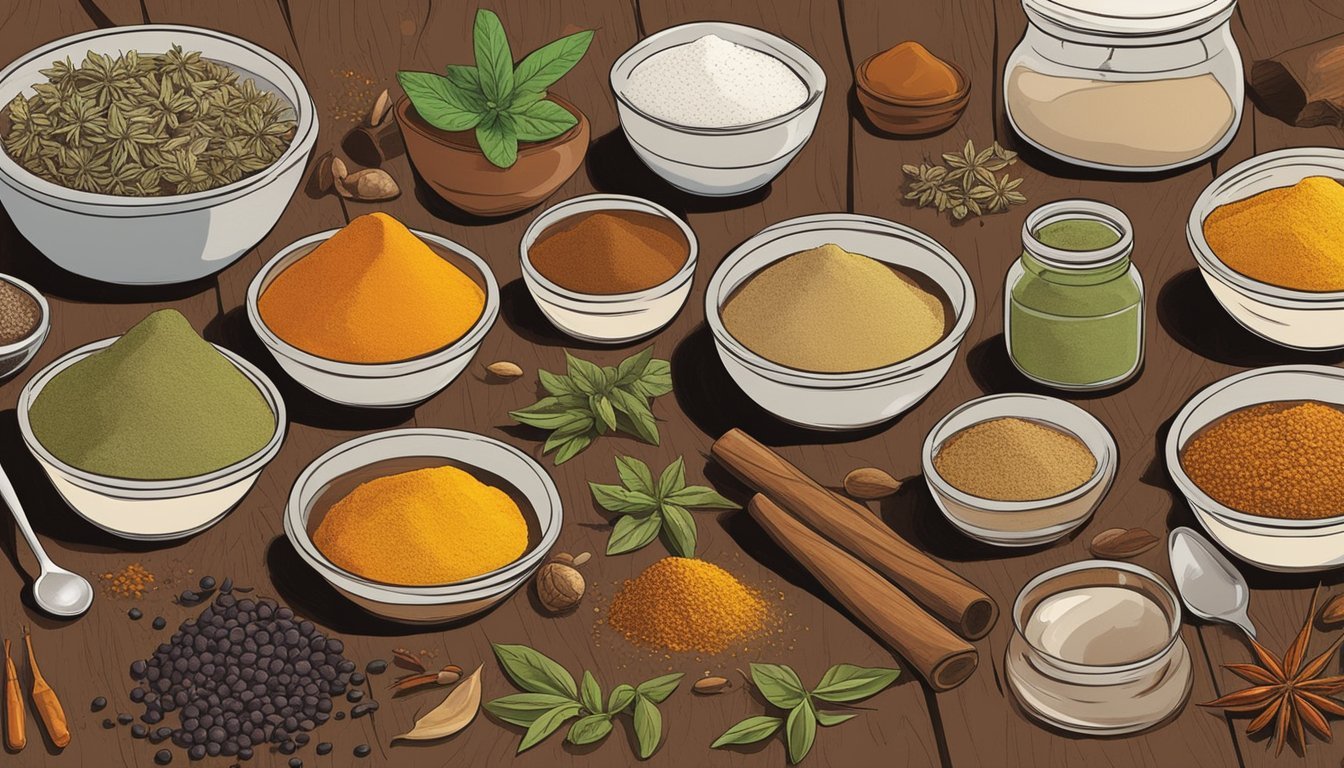Swicy DIY
Crafting Homemade Sweet-Spicy Blends with Ease
Seasoning food is both an art and a science, blending flavors to perfectly complement a dish. Sweet and spicy seasonings, also known as "swicy," offer a balance of warmth and sweetness that can elevate a meal from ordinary to extraordinary. Making these seasonings at home is a straightforward process that allows for complete control over ingredients and flavor profiles. A homemade approach ensures freshness, avoids preservatives, and often surpasses the taste of store-bought options.
For culinary enthusiasts seeking to create their own swicy seasonings, the kitchen becomes a playground for experimentation. Home cooks can adjust the sweetness or heat to match their preference, using ingredients like honey or molasses for a mellow sweetness, and chiles or paprika for a fiery kick. The process typically involves combining wet and dry components, simmering to meld the flavors together, and then adjusting the balance to achieve the perfect harmony.
Creating seasonings and sauces at home is not just a means to an end but rather an experience in itself. It encourages a deeper understanding of how different flavors work together and results in a personalized touch that can be proudly shared with friends and family at any BBQ or home-cooked meal. The gratification of crafting a unique swicy blend is matched only by the rich, layered taste it adds to a variety of dishes.
Understanding Seasonings and Spices
Creating a balanced and flavorful seasoning mix starts with an understanding of the essential spices that contribute to a sweet-spicy profile. A knowledge of how spices interact to build complex flavors is key when making DIY seasonings.
The Basics of Flavor and Aroma
The foundation of any good seasoning lies in understanding how different spices contribute to the overall flavor profile. In terms of flavor, seasonings generally fall into one of five categories: sweet, salty, sour, bitter, or umami. Aroma, on the other hand, adds another dimension and can greatly enhance the perception of taste. Sweet-spicy seasonings harness a combination of sugars and heat to create a dynamic taste experience.
Key Flavor Contributors:
Sweet: Often provided by sugar or natural sweeteners.
Salty: Comes from salt, a universal flavor enhancer.
Spicy: Derived from spices like chili powder, cayenne, and black pepper.
Aromatic Spices:
Garlic Powder: Adds a rich, savory undertone.
Onion Powder: Delivers a sharp, slightly sweet aroma.
Cumin: Imparts an earthy, warm scent.
Popular Spices for DIY Seasonings
When crafting a sweet-spicy seasoning, certain spices are go-to choices for their ability to deliver both heat and sweetness, as well as contribute to the overall flavor profile.
Spice List:
Paprika / Smoked Paprika: Provides warmth and color, with smoked varieties offering a rich, barbecue-like flavor.
Cayenne Pepper: Brings a clean, sharp heat without overwhelming other flavors.
Chili Powder: Adds a complex layer of moderate spiciness, complemented by an intricate blend of other spices.
Garlic Powder: A ubiquitous spice that offers a concentrated burst of garlic flavor.
Coriander Seeds: Their nutty, citrusy flavor adds a hint of sweetness and depth to spice mixes.
Combining Spices:
Experimenting with proportions of cayenne, chili powder, and sweet elements like sugar can yield a range of heat levels in the seasoning.
Herbs like oregano and thyme contribute additional nuances that complement both the sweet and spicy components.
The key to a well-rounded seasoning mix is balancing these spices to achieve the desired flavor profile, without any single spice overpowering the others.
By carefully selecting and combining these spices and herbs, anyone can create their own unique sweet-spicy seasoning blends that enhance a multitude of dishes.
Selecting the Right Ingredients
Choosing quality ingredients and understanding how to combine them is pivotal in creating your own sweet-spicy (swicy) seasonings at home. The harmony between spices and herbs is what you’ll leverage to achieve the desired 'swicy' profile.
Quality and Types of Ingredients
Quality: When selecting ingredients for swicy seasoning, the freshness of both herbs and spices is crucial. Dried herbs, including oregano, thyme, and rosemary, should retain their color and aroma, indicating they are not too far removed from their original potency. Spices like cumin, black pepper, allspice, and nutmeg should be purchased whole and ground as needed to ensure the fullest flavor.
Types of Ingredients:
Spices: Cumin provides a warm, earthy base while black pepper adds a sharp bite. Allspice brings a hint of sweetness, and nutmeg rounds it out with its slightly sweet, nutty flavor.
Herbs: Oregano, thyme, and rosemary are robust herbs that complement the heat from spices. Opting for dried herbs offers a more concentrated flavor and a longer shelf life.
Combining Spices and Herbs
When combining spices and herbs, balance is key. One should start with a base of common, versatile spices and then layer flavors to build complexity.
Steps to Combine:
Start with a Base: Use a ratio that favors the primary flavor—spicy or sweet—then adjust as you go.
Build Complexity: Add complementary herbs and spices in smaller amounts. For example, a pinch of thyme can add depth to the sweetness, while a dash of nutmeg could enhance spicier elements.
Taste and Adjust: The 'swicy' blend should be tested and refined. If the flavor is too spicy, add more of the sweeter elements like allspice or nutmeg. If too sweet, a bit more cumin or black pepper could increase heat.
Remember to label and date your spice blends, as dried spices and herbs can lose their potency over time.
Homemade Seasoning Recipes
Creating homemade seasoning blends allows individuals to customize flavors to their personal taste, often resulting in a fresher, more vibrant kick to meals. These blends can range from classic staples to more creative variations that cater to every palate.
Classic Seasoning Blends
One can begin with the classics, like BBQ Seasoning, a must-have for grilling enthusiasts. The quintessential recipe typically includes:
Brown sugar
Paprika
Garlic powder
Onion powder
Salt and pepper
A touch of cayenne for heat
Another staple is Taco Seasoning, which punches up the zest in any taco night. For a homemade taco blend, one would need to mix:
Chili powder
Ground cumin
Garlic powder
Onion powder
Dried oregano
Paprika
Sea salt and black pepper
Lastly, Pumpkin Pie Spice warms one up with a mix of:
Ground cinnamon
Ground ginger
Ground nutmeg
Ground cloves
Allspice
These timeless blends anchor a home cook’s spice arsenal, providing a reliable and consistent base for a multitude of dishes.
Creative Variations for Every Taste
For those looking to broaden their culinary horizons, creative variations on seasoning recipes can offer an exploration of global flavors. Fajita Seasoning, for instance, can be tweaked with the addition of:
Ground coriander
Lime zest
By adjusting the proportions or adding unexpected spices, one can customize a blend to make it their own. Adventurous cooks might experiment by incorporating smoked paprika into their BBQ seasoning for an additional smoky flavor or add a hint of cocoa powder to deepen the complexity of their taco seasoning.
In essence, homemade seasoning recipes provide an avenue for personal expression in the kitchen. The individual has complete control over the ingredients—allowing them to prioritize freshness and flavor while adapting to dietary needs and taste preferences.
Cooking with Homemade Seasonings
When preparing meals, the strategic use of homemade sweet-spicy seasonings can elevate even the simplest dishes to flavorful heights, allowing the cook to tailor flavors to their preference.
Meat, Poultry, and Fish
Meat: The robustness of beef stands up well to bold sweet-spicy mixes. A homemade rub applied to steaks before grilling can create a caramelized exterior with a succulent interior.
Pork: A glaze on pork, combining sweet elements like brown sugar with chili flakes, can create a tantalizing crust.
Chicken: Applying a spice blend under the skin of chicken ensures that each bite is infused with flavor.
Fish: A light dusting of seasoning on delicate proteins like fish should be done moments before cooking to maintain the integrity of the flavor.
Table: Effective Seasoning Techniques for Meat, Poultry, and Fish
Protein Technique Note Beef Rubbing Apply before grilling for a caramelized surface. Pork Glazing Combine sweet with spicy to create a crust. Chicken Spicing under the skin For deeper flavor infusion. Fish Light dusting Season right before cooking.
Vegetables and Other Proteins
Vegetables: Potatoes, for instance, can be tossed in a sweet-spicy seasoning before roasting to enhance their natural flavor.
Other Proteins: Proteins like shrimp benefit from a swift marinade in seasoning to draw out their natural sweetness while adding a heat kick.
List: Suggested Homemade Sweet-Spicy Seasoning Applications
For roasted vegetables: (What wine goes well with roasted vegetables?) Toss vegetables like potatoes in olive oil and seasoning before roasting.
For shrimp: Marinate briefly in seasoning to complement their sweetness without overpowering.
Creating personalized seasoning blends for use in a variety of recipes permits a chef to imprint their signature onto every dish, whether it's the fiery sweetness glazed onto a pork chop or the subtle warmth within a roasted vegetable medley.
DIY Seasoning Techniques
Creating your own sweet-spicy seasonings at home is an engaging process that involves precise measuring and thorough blending of spices. The right techniques ensure a well-balanced flavor and texture.
Grinding and Blending
To achieve the perfect consistency for a rub, grinding your spices is essential. A spice grinder is ideal for this task, though a coffee grinder can also be used. First, one must grind the larger spices down to a size that will blend smoothly with fine-grained ingredients. After grinding, all spices should be placed in a bowl and carefully blended together to ensure homogeneity.
Grind whole spices until fine and powdery.
Blend evenly to distribute flavors.
Measuring and Mixing
Precise measurement is crucial to crafting a well-balanced sweet-spicy seasoning. Utilize measuring spoons or a kitchen scale to ensure accuracy. Once all components are measured, it’s time to mix. A whisk or a spoon can be used to stir the mix in a bowl, melding the distinct notes into one harmonious flavor profile.
Measure ingredients accurately to maintain flavor balance.
Stir gently with a whisk to combine all spices thoroughly.
Preservation and Storage Tips
Proper preservation and storage are critical in maintaining the flavor and extending the shelf life of homemade sweet-spicy seasonings. The use of appropriate containers and understanding the environment best suited for storage ensures spices retain their potency and aromatic qualities.
Containers and Labeling
Containers: For storing sweet-spicy seasoning mixes, one should opt for airtight containers. Glass jars, specifically mason jars with tight-fitting lids, are an excellent choice as they prevent moisture and air from degrading the seasonings. Oil residues should be avoided on the rim or inner lid as it may compromise the seasoning's quality.
Labeling: It is essential to label each container with the name of the seasoning, prep time, and total time details. Including the date of creation is beneficial for tracking shelf life.
Examples of labels:
Sweet-Spicy BBQ Rub - Prepped: 04/01/2023, Best Before: 10/01/2023
Chili Maple Seasoning - Prepped: 04/05/2023, Best Before: 10/05/2023
Maximizing Shelf Life
Cool, Dry Place: Always store seasoning mixes in a cool, dry place, such as a pantry or cabinet, away from direct sunlight and heat sources. Heat can diminish the seasonings’ flavors and induce clumping.
Shelf Life Considerations:
Dried Herbs and Spices: Generally maintain potency for 1-3 years.
Seasoning Mixes with Salt or Sugar: Can have an extended shelf life due to the preserving nature of salt and sugar.
Tips:
Ensure the lid is always secured tightly after each use.
Avoid using utensils that are wet or have been used with other food items to prevent cross-contamination.
By adhering to these preservation and storage tips, the homemade sweet-spicy seasonings will maintain their intended flavor profiles and quality for the longest possible time.
Health and Dietary Considerations
When creating homemade sweet-spicy seasonings, one optimizes control over health aspects such as additives and caloric content, ensuring a healthier, more balanced diet.
Avoiding Additives and Preservatives
Homemade seasoning mixes allow consumers to avoid unnecessary additives and preservatives often found in store-bought blends. This control means that individuals can select all-natural ingredients and sidestep common preservatives like monosodium glutamate (MSG) or high amounts of sodium. For example, one can choose kosher salt or sea salt over regular table salt, which can offer a less processed alternative. Storing these seasonings in airtight jars extends their shelf-life naturally without the need for chemicals.
Adjusting Spice Levels and Caloric Content
Creating seasonings at home not only paves the way for healthy and easy adjustments according to dietary needs but also allows fine-tuning of calorie intake. For instance:
Calories: Homemade mixtures can be made with less sugar to reduce overall calories.
Spice levels: They can be adjusted from mild to hot, suiting various palates and tolerance levels.
This approach provides individuals with a way to enjoy flavorful meals without compromising health goals, emphasizing a balanced integration of taste and nutrition.
Seasoning Your Kitchen Economy
Creating homemade spice mixes not only adds a personal touch to cooking but can also lead to considerable cost savings. This section breaks down the financial benefits of making spice blends at home compared to purchasing pre-made varieties from stores.
Saving Money with Homemade Spice Mixes
When cooks prepare homemade seasoning mixes, they often use spices already in their pantry. Bulk purchasing of base spices such as salt, paprika, garlic powder, and cayenne pepper enables them to craft a variety of spice mixes without the need for frequent, individual purchases. By controlling the mix quantities, there is less waste, and home chefs can adjust the recipes to their tastes, which store-bought versions cannot always offer.
Bulk Purchase Savings: Buying spices in bulk can result in significant cost reductions.
Customization: Homemade spice blends allow for adjusting ingredient ratios, avoiding the cost of specialty blends.
Reduced Waste: Making just the right amount means money isn't spent on excess spices that may expire.
Comparing Costs to Store-Bought Varieties
A comparison between the costs of homemade spice mixes and their store-bought counterparts reveals a disparity favoring home preparation. For instance, a homemade rotisserie chicken seasoning mix can cost mere cents per batch, while a pre-mixed jar could run several dollars at a retail price.
Cost Comparison Table:
Spice Mix Homemade Cost Store-Bought Cost Chicken Seasoning $0.30 per batch $3.99 per jar Taco Seasoning $0.25 per batch $1.99 per packet BBQ Rub $0.40 per batch $4.50 per shaker
The table illustrates that homemade spice mixes typically cost less than pre-packaged ones, emphasizing the economic advantage for home cooks.
Sharing and Packaging
When one crafts homemade seasoning blends, sharing them with friends and family or venturing into business are excellent ways to spread the joy of unique flavors. Thoughtful presentation and smart marketing strategies can transform a simple blend into a memorable gift or a successful product.
Gifting Custom Spice Blends
Individuals often seek special and personal gifts for their loved ones, and custom spice blends are an ideal choice. Presenting them in mason jars adds a rustic charm, while also keeping the spices fresh. One can embellish these jars with ribbon and attach a recipe card for a personal touch. Here's a simple guide on how to package spice blends for gifting:
Step 1: Fill a clean mason jar with your homemade blend.
Step 2: Secure the lid tightly to preserve freshness.
Step 3: Add a label with the name of the blend and date of creation.
Step 4: Decorate with a ribbon or fabric.
Step 5: If desired, attach a card with suggested uses or recipes.
Marketing Your Own Spice Brand
For those aspiring to sell their spice blends, it's important to understand the power of branding and online presence. Utilizing platforms like Instagram can increase visibility and attract potential buyers through visually appealing photos and engaging content. One might also consider setting up affiliate links on a blog or website to drive sales. Below is an outline for starting a spice brand:
Establishing Brand Identity:
Choose a catchy name and logo.
Create compelling storytelling around your blends.
Online Marketing:
Utilize professional photos of your seasonings.
Share customer testimonials and recipe ideas.
Sales Strategy:
Consider offering sample packs to entice buyers.
Use affiliate links to track and incentivize online sales.
Advanced Homemade Seasonings
Creating advanced homemade seasonings allows one to elevate dishes by drawing on a myriad of global influences and experimenting with unique sweet-spicy combinations. This approach not only broadens the palate but also introduces an element of customization to cooking.
Global Spice Mix Inspiration
In the realm of global spice blends, one should consider the balance and character that different spices bring to the table. Paprika, for instance, lends a sweet and smoky undertone, often found in Spanish, Hungarian, and Mexican spice mixes. A blend inspired by these regions could include:
Spanish Paprika Mix:
2 tbsp smoked paprika
1 tsp garlic powder
1 tsp cumin
1/2 tsp saffron (optional)
For a more complex profile, Middle Eastern or North African mixes often incorporate cinnamon, which adds a warm, sweet aroma. A basic blend may consist of:
Middle Eastern Cinnamon Blend:
3 tbsp cinnamon
1 tbsp cumin
1 tbsp coriander
1 tsp nutmeg
Experimenting with Sweet-Spicy Combinations
The experimentation with sweet-spicy combinations can lead to unique and personalized seasonings. Maple sugar, for instance, has a rich, sweet flavor that pairs exceptionally well with the smoky heat of chipotle powder. A simple mix might be:
Maple Chipotle Seasoning:
2 tbsp maple sugar
1 tbsp chipotle powder
1 tsp sea salt
This blend is excellent for creating a caramelized glaze on meats or a spicy kick to sweet dishes. By balancing the heat of the chipotle with the sweetness of the maple sugar, one can craft a seasoning that is as complex as it is versatile.
Conclusion
Creating homemade sweet-spicy seasonings allows individuals to explore their culinary creativity while tailoring flavors to their preferences. They are practical, cost-effective, and can be fine-tuned for the desired heat and sweetness level. To ensure long-lasting freshness, these seasonings should be stored in airtight containers, away from heat and light. Here are some final tips and variations to consider:
Freshness: Use the freshest spices for more impactful flavors. Grinding whole spices just before mixing preserves essential oils and potency.
Customization: Start with suggested recipes and adjust the level of sweetness or spiciness to suit one's taste.
Storage: Label jars with the date of creation; most blends retain their character for six months to a year.
Usage Ideas: Beyond their typical matches, try these seasonings on popcorn, roasted nuts, or even in baking to add an unexpected twist.
Remember, small batches can prevent waste and allow for experimenting with different spice combinations. Encouraging cooks to mix and match ingredients leads to unique and personalized seasoning blends. Whether one prefers a smoky chipotle sugar or a tangy barbecue rub, the possibilities are endless. Homemade sweet-spicy seasonings add a distinctive touch to dishes and reflect the maker's palette, making the culinary experience both enjoyable and uniquely flavored.


